After retiring in 2024, Tom Killeen, a longtime member and officer at SMART Local 100 (Washington, DC area), embarked on a trip to Ireland and Scotland. The primary purpose of the expedition was to see family — however, Killeen’s itinerary also included a stunning monument to the industry and craftsmanship that define not just our union, but sheet metal workers worldwide.
Killeen’s cousin, renowned sculptor John McKenna, is taking the tools of our trade to a colossal level.
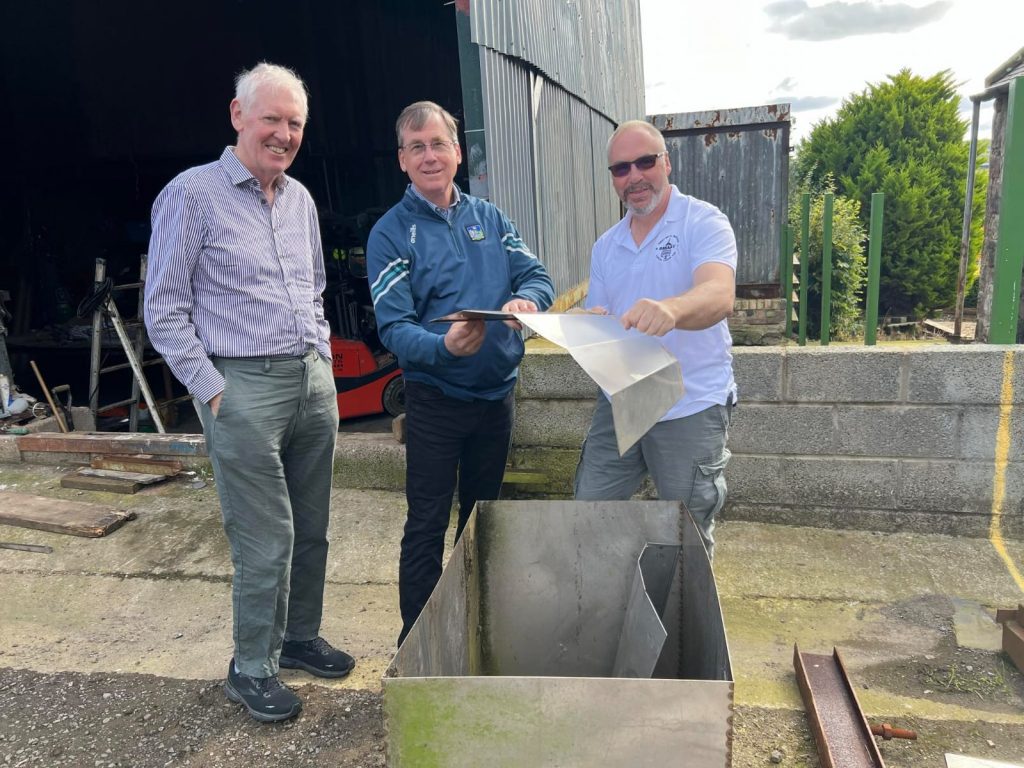
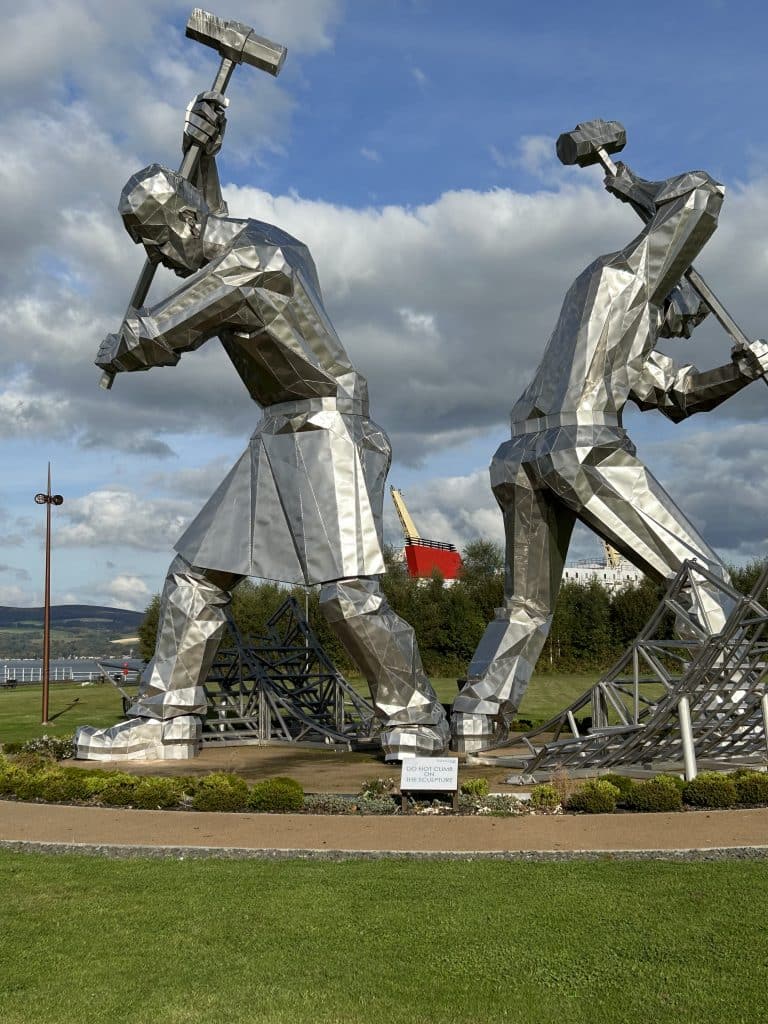
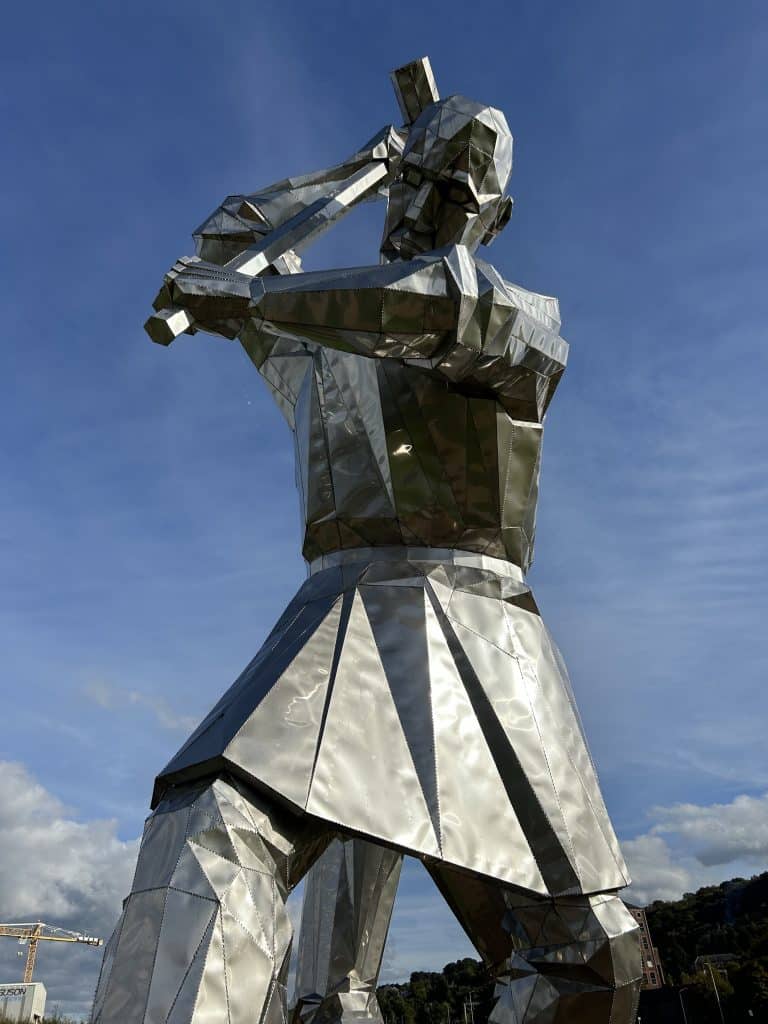
Since the 1990s, McKenna has forged an acclaimed career as a public artist, known for large-scale sculptures at Wimbledon, the Celtic F.C. soccer stadium, a statue of AC/DC frontman Bon Scott and various tributes to working people, including a 40-foot-tall statue of a coal miner in England.
“I always go back to people at work — it’s what I’ve made my career out of,” McKenna said. “I feel I’m making work for the public to enjoy.”
Killeen, McKenna and another cousin, Fergus Clancy, visited one of McKenna’s more recent homages to working people: “The Ship Builders of Glasgow,” a pair of 40-plus-foot figures constructed from 316 marine grade stainless steel, depicting ship builders at work.
It was important to McKenna that the sculpture — intended to honor the Port Glasgow ship building industry and overwhelmingly selected by local voters following a public proposal competition — show collective labor instead of just one worker: “two men, breaking their backs, putting hard, hot work into these ships.”
“I made these colossal figures in my studio workshop in Ayrshire,” McKenna wrote on his website. “[It] took almost eight years to create these titans to the former glorious industry of Port Glasgow, where numerous shipyards built thousands of ships which were sent all around the world. Those shipyards, now long gone, were testament to the industry of the people of the Clyde. This sculpture was my way of recognising those long gone folk who made ships that sailed to every corner of the earth.”
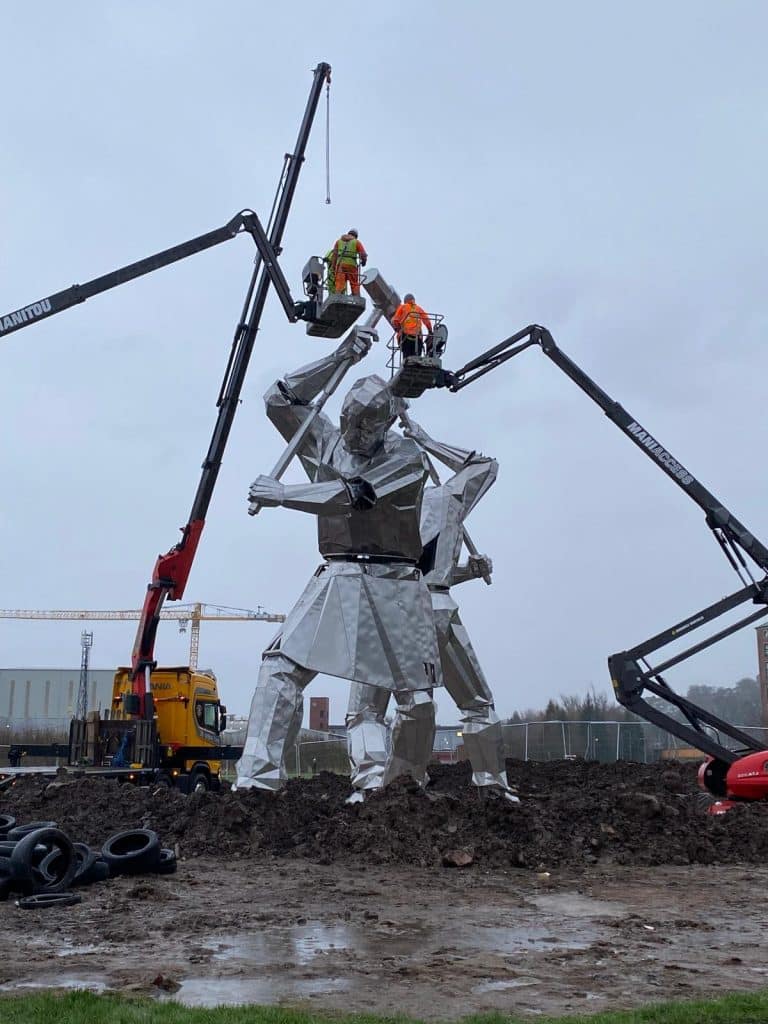
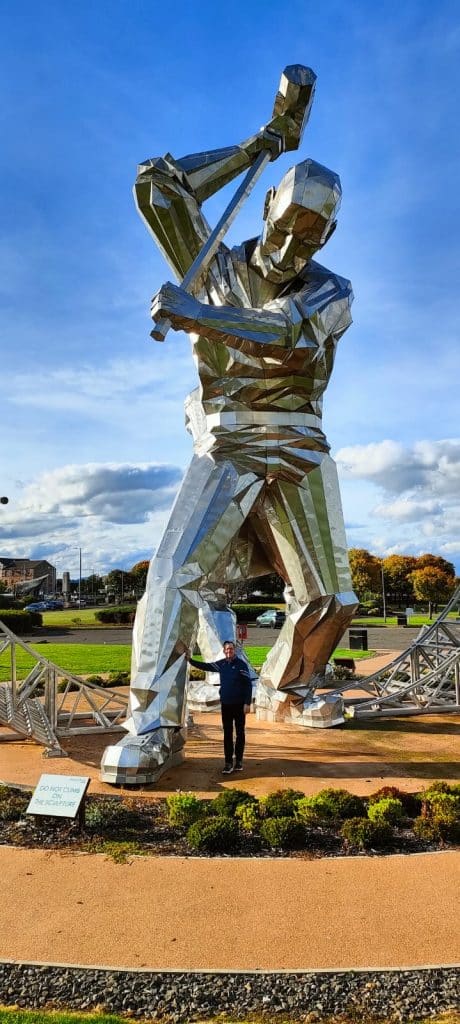
McKenna built the two figures, which weigh a combined total of nearly 45 tons, in sections, removing the roof of his barn-turned-studio in order to transport them to the site of the former Port Glasgow. He painstakingly designed the two figures in CAD, spending sleepless nights planning for every minute detail in the design, construction and assembly process — where the figures’ joints would hinge, spacing the two figures correctly to avoid collisions during construction, sizing the segments of each figure for transportation, creating openings for hooks to hoist pieces during assembly, etc.
The structures required a guarantee that they would last 120 years — not in a sterile, museum-like environment, but at a park near the last operational shipyard in the area, withstanding fierce seaside winds, salty air and blasts of industrial sediment. McKenna worked with a structural welder on the “skeletons” of the two figures, using a shielding gas with a flux and a mig wire to form the figures out of two-foot-diameter steel pipes. He and his team then cladded the base figures with .9-millimeter stainless steel plates, cut and folded using a guillotine shear and an eight-foot box and pan folder (known in the U.S. as a press brake). In all, there were thousands of metal sheets riveted or welded together, with hundreds of thousands of spot welds that gave the sculptures their textured, flowing look.
“When the heat of all the little welds goes in, it buckles all the metal sheets, so instead of being a very mechanical, flat, faceted sculpture, the buckles and ripples all over the surface made it more organic,” McKenna explained, adding that the very material he used to create the two figures was what workers hammered to forge ocean-spanning ships in years past: “That was the whole idea with the spot welding, bringing together the sheet metal components that the ships were built out of.”
During his visit, Killeen gave McKenna a Local 100 shirt — symbolizing simultaneously the international heritage of our union, the solidarity that bonds the world’s working people, and the artistry and craftsmanship of sheet metal workers around the globe.
“‘The Ship Builders of Glasgow’ is an incredible display of the expertise and skill sheet metal workers practice every day, from Local 100 to Scotland,” Killeen said. “I was proud to represent our union overseas, and I hope these statues serve as a reminder to all who see them of the workers who power our world.”
To learn more, visit www.johnmckenna.co.uk.
Related News
- “Three Pack” attacks: SMART councils meet to fortify union in California
- Local 24 organizes newly arrived Ohioans to strengthen our union
- Local 435 lifts working conditions, pay and benefits in Gainesville
- Louisville & Indiana members say change in representation like ‘night and day’
- Newly organized Local 20 members discuss the union difference
- Local 206 helps win citywide San Diego PLA
- Organize, organize, organize!
- Local 28 member showcases SMART members’ role in fight against climate change